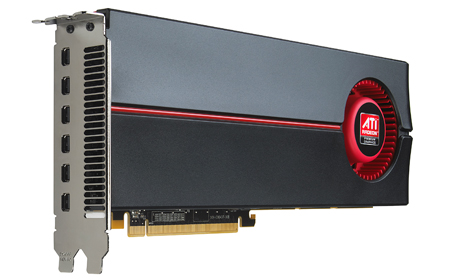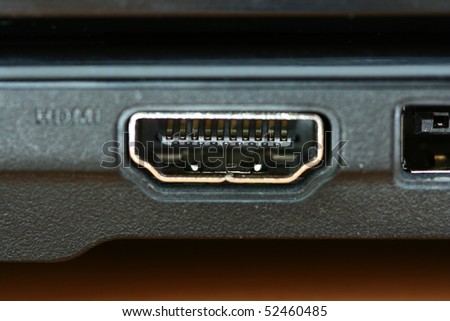RAM
Random-access memory (RAM) is a form of computer data storage. Today, it takes the form of integrated circuits that allow stored data to be accessed in any order with a worst case performance of constant time. Strictly speaking, modern types of DRAM are therefore not random access, as data is read in bursts, although the name DRAM / RAM has stuck. However, many types of SRAM, ROM, OTP, and NOR flash are still random access even in a strict sense. RAM is often associated with volatile types of memory (such as DRAM memory modules), where its stored information is lost if the power is removed. Many other types of non-volatile memory are RAM as well, including most types of ROM and a type of flash memory called NOR-Flash. The first RAM modules to come into the market were created in 1951 and were sold until the late 1960s and early 1970s. However, other memory devices (magnetic tapes, disks) can access the storage data in a predetermined order, because mechanical designs only allow this.
A CPU cache is a cache used by the central processing unit of a computer to reduce the average time to access memory. The cache is a smaller, faster memory which stores copies of the data from the most frequently used main memory locations. As long as most memory accesses are cached memory locations, the average latency of memory accesses will be closer to the cache latency than to the latency of main memory.
ROM
Read-only memory (ROM) is a class of storage medium used in computers and other electronic devices. Data stored in ROM cannot be modified, or can be modified only slowly or with difficulty, so it is mainly used to distribute firmware (software that is very closely tied to specific hardware, and unlikely to need frequent updates).
Flash Memory
Flash memory is a non-volatile computer storage chip that can be electrically erased and reprogrammed. It is primarily used in memory cards, USB flash drives, MP3 players and solid-state drives for general storage and transfer of data between computers and other digital products.
Graphics Card
A video card, video adapter, graphics accelerator card, display adapter, or graphics cardis an expansion card whose function is to generate output images to a display. Most video cards offer added functions, such as accelerated rendering of 3D scenes and 2D graphics, video capture, TV-tuner adapter, MPEG-2/MPEG-4 decoding, FireWire, light pen, TV output, or the ability to connect multiple monitors (multi-monitor). Other modern high performance video cards are used for more graphically demanding purposes, such as PC games.

Sound Card
A sound card (also known as an audio card) is an internal computer expansion card that facilitates the input and output of audio signals to and from a computer under control of computer programs. The term sound card is also applied to external audio interfaces that use software to generate sound, as opposed to using hardware inside the PC. Typical uses of sound cards include providing the audio component for multimedia applications such as music composition, editing video or audio, presentation, education and entertainment (games) and video projection. Many computers have sound capabilities built in, while others require additional expansion cards to provide for audio capability.
Network Interface Card
A network interface controller (also known as a network interface card, network adapter,LAN adapter and by similar terms) is a computer hardware component that connects a computer to a computer network.
Plug and Play

Serial Port
In computing, a serial port is a serial communication physical interface through which information transfers in or out one bit at a time (contrast parallel port). Throughout most of the history of personal computers, data transfer through serial ports connected the computer to devices such as terminals and various peripherals.
Parallel port

Universal Serial Bus Port
Universal Serial Bus (USB) is a specification to establish communication between devices and a host controller (usually a personal computer), developed and invented by Ajay Bhatt, while working for Intel. USB has effectively replaced a variety of interfaces such as serial and parallel ports.

Firewire port
The IEEE 1394 interface is a serial bus interface standard for high-speed communications and isochronous real-time data transfer, frequently used by personal computers, as well as in digital audio, digital video, automotive, and aeronautics applications. The interface is also known by the brand names of FireWire (Apple), i.LINK (Sony), and Lynx (Texas Instruments). IEEE 1394 replaced parallel SCSI in many applications, because of lower implementation costs and a simplified, more adaptable cabling system. The 1394 standard also defines a backplane interface, though this is not as widely used.

Ethernet port
Ethernet is a family of frame-based computer networking technologies for local area networks (LAN). It defines a number of wiring and signaling standards for the Physical Layer of thestandard networking model as well as a common addressing format and a variety of Medium Access Control procedures at the lower part of the Data Link Layer.
High Definition Multimedia Interface
HDMI (High-Definition Multimedia Interface) is a compact audio/video interface for transmitting uncompressed digital data. It is a digital alternative to consumer analog standards, such as radio frequency (RF) coaxial cable, composite video,S-Video, SCART, component video, D-Terminal, or VGA. HDMI connects digital audio/video sources (such as set-top boxes, DVD players, HD DVD players, Blu-ray Disc players, AVCHD camcorders, personal computers (PCs), video game consoles such as the PlayStation 3 and Xbox 360, and AV receivers) to compatible digital audio devices, computer monitors, video projectors, and digital televisions.





No comments:
Post a Comment